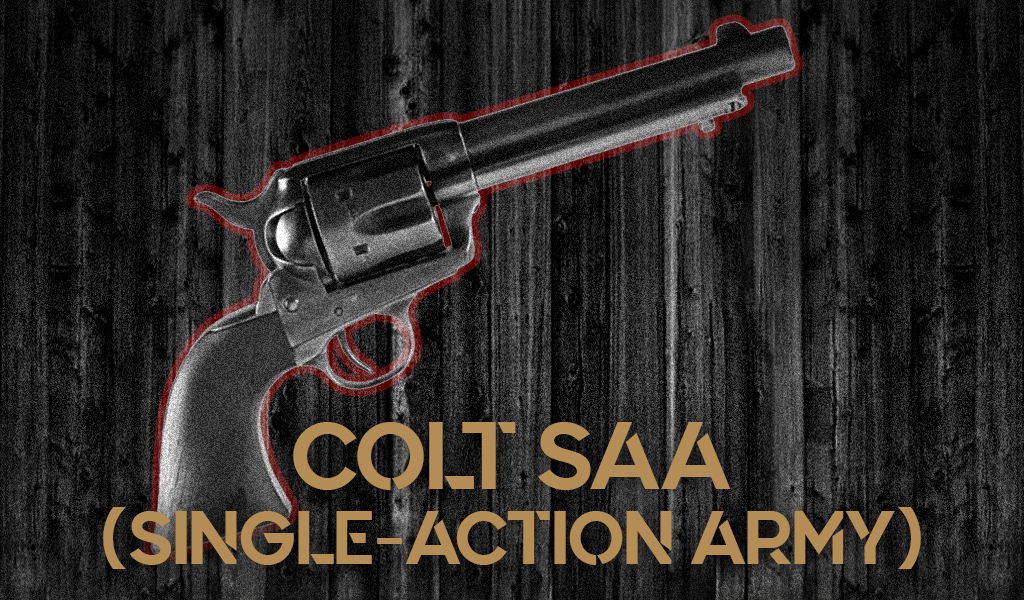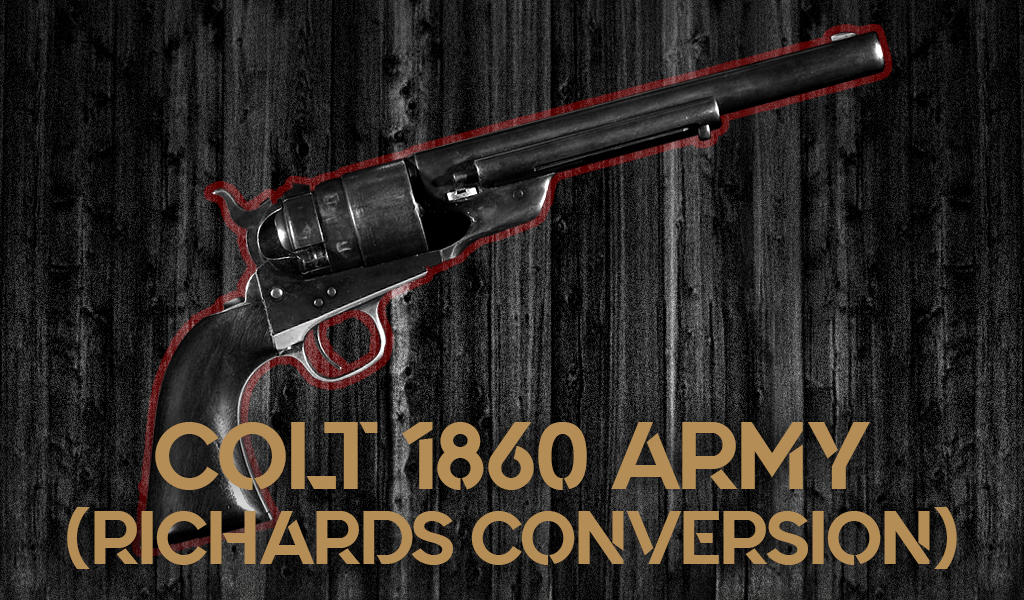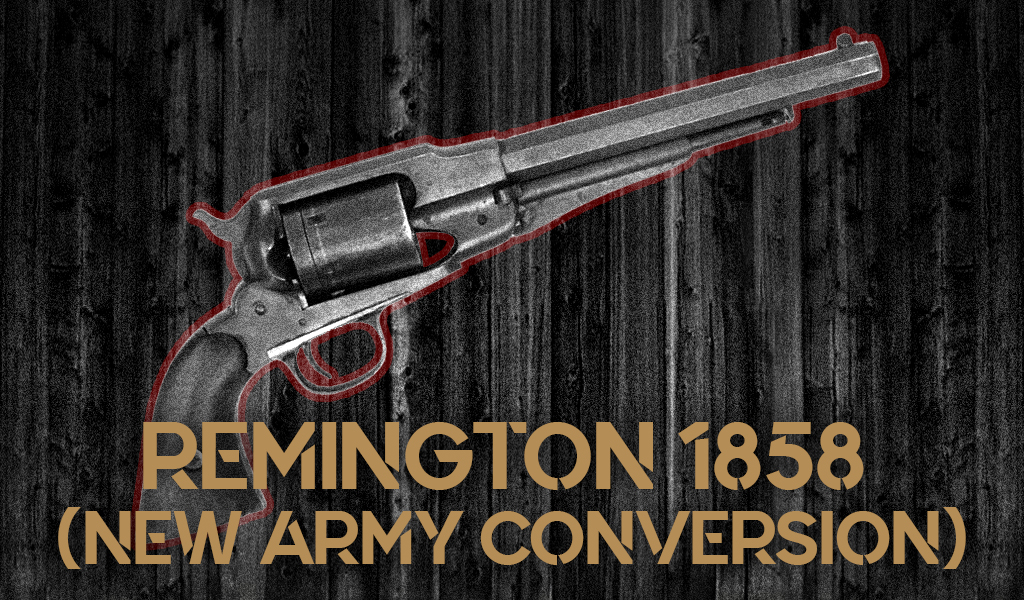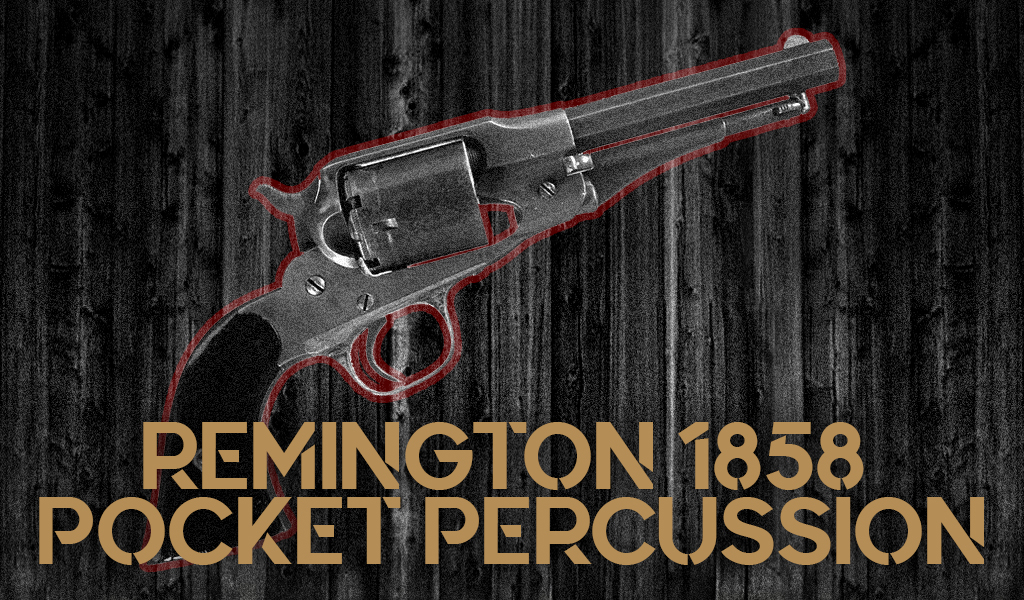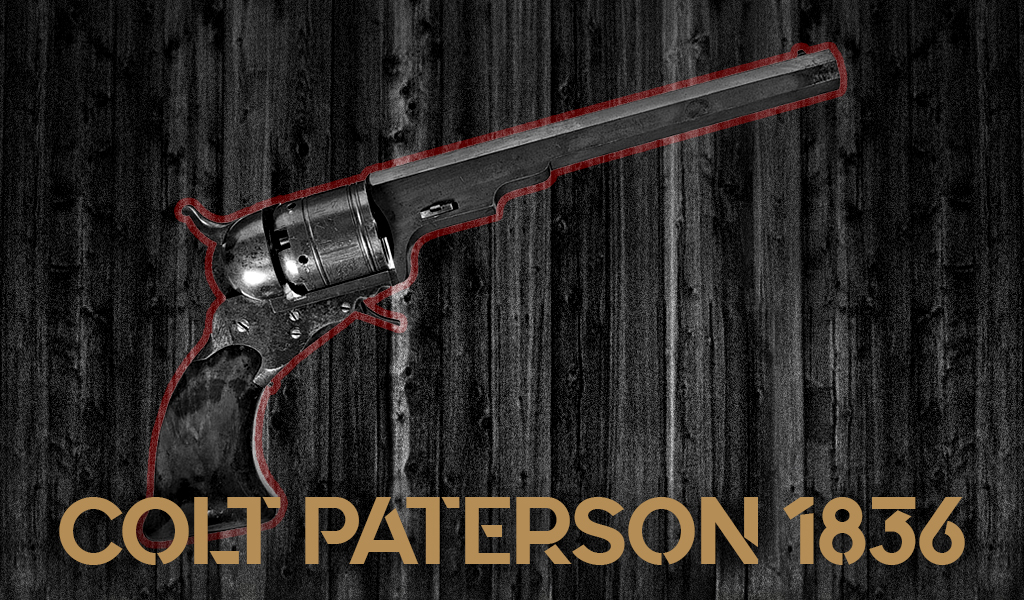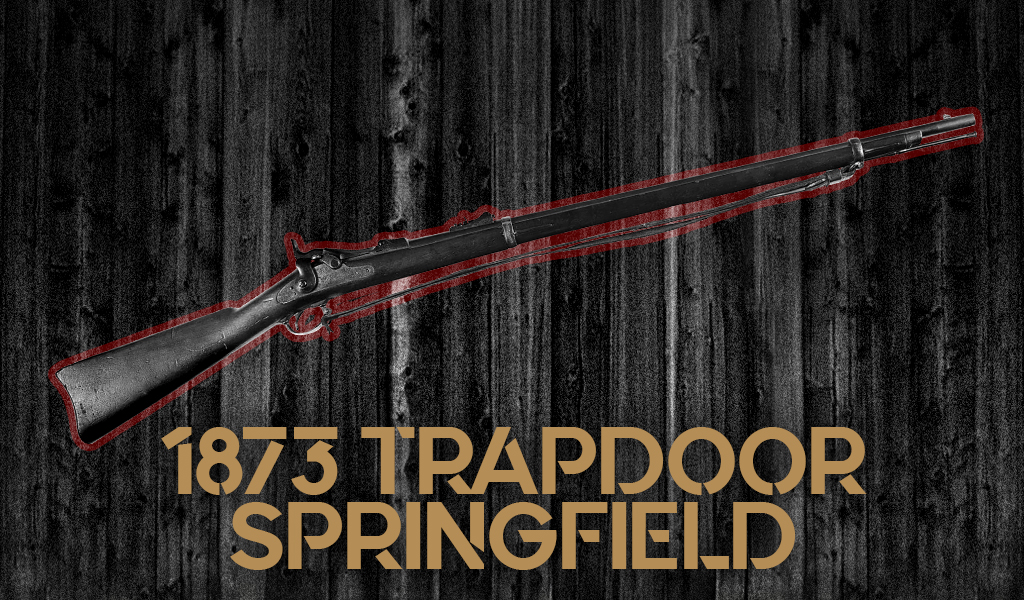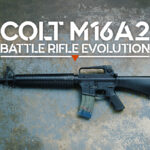
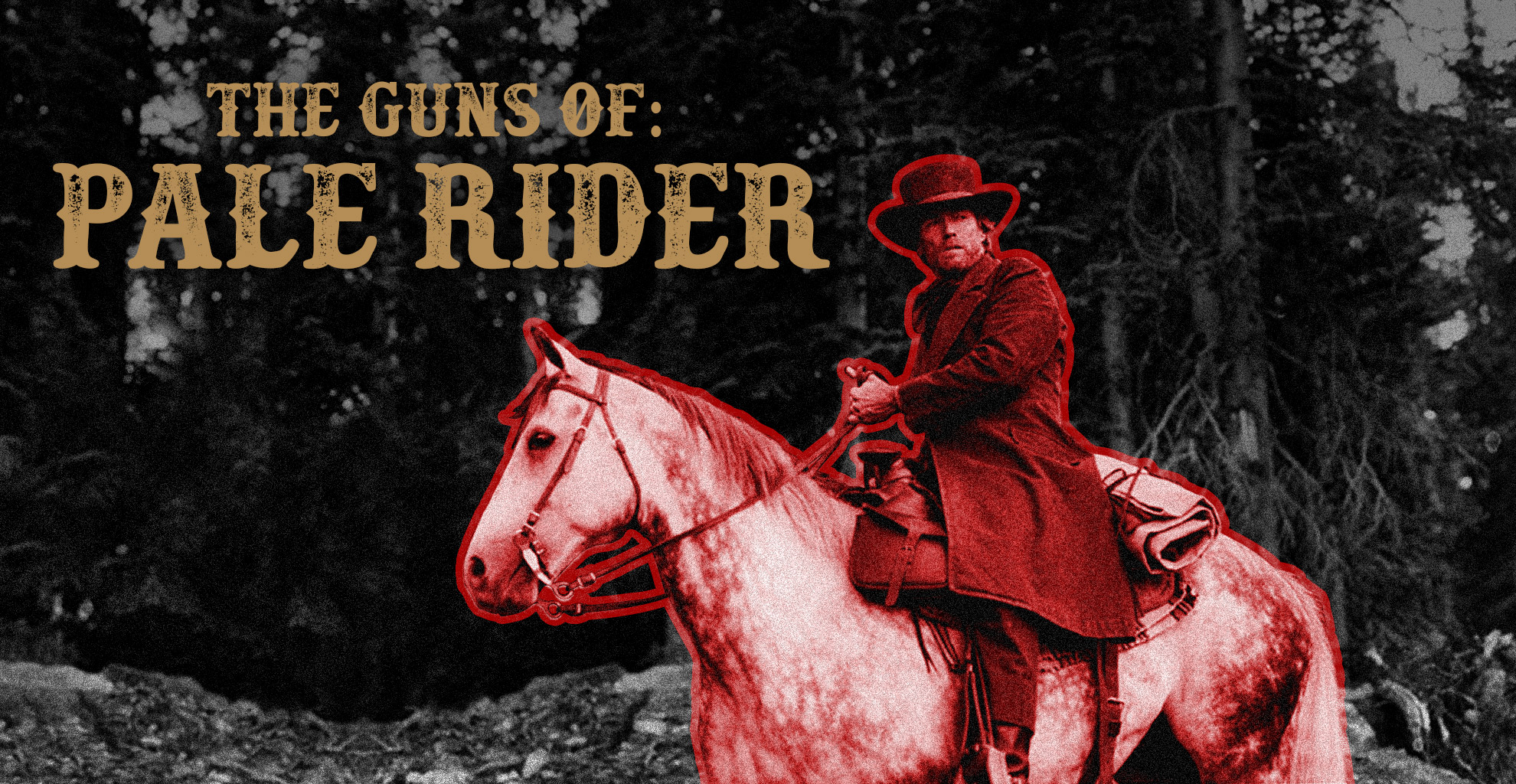
Clint Eastwood is both the director and star in this traditional Western from 1985. The movie has everything that his fans have come to expect including action, drama, and plenty of guns of Pale Rider. This time he plays a reticent stranger, called Preacher, who says little but carries a big stick (literally). Early in the movie, he confronts several men who have ganged up on an innocent settler. His weapon? An ax handle that he wields to turn the attackers into a heap of broken bodies.
“There’s plain few problems can’t be solved with a little sweat and hard work.” -Preacher (Clint Eastwood)
But before Preacher ever arrives on the scene, we witness a raid on an independent gold-mining camp. Orchestrated by the son of a local banker on his father’s orders, the camp is left in ruins. The only casualties are some cattle, killed by one of the thugs with a Colt Single-Action Army Cavalry revolver. They also shoot a small white dog shot down with a Colt 1860 Army with Richards Conversion. Let’s look at these guns of Pale Rider below:
Guns Of Pale Rider
Colt Single-Action Army (SAA) Revolver
In 1873, Colt’s Single-Action Army Revolver became the Army’s standard sidearm. Cavalry troopers, lawmen, and outlaws were soon armed with them. Also known as the “Peacemaker” and “The Gun that Won the West,” Colt produced the single-action, .45-caliber Army with a case-hardened color frame and blued barrel. Among its famous users were “Wild Bill” Hickock, “Billy the Kid” Bonney, the Earp brothers, and General George S. Patton.
Colt 1860 Army with Richards Conversion
Named for Charles Richards, an engineer who worked at Colt, the Richards Conversion consisted of taking the .44-caliber Colt 1860 Army revolver and replacing the loading lever with an ejector rod. The Conversion also added a breech plate with a firing pin and integral rear sight.
When Preacher rides into town, he immediately lands in the middle of a feud between a group of independent gold miners, who have a legal claim to their land, and a ring of evil men that revolve around a greedy banker and a marshal, who acts as his hired gun. The banker wants to buy out the smaller miners (at a pitifully low price), but he is willing to use force to move them off their land and claim it for himself.
Preacher might be a man of the cloth, but he is not averse to using some force of his own, evidenced by the Remington 1858 New Army in his holster, along with several pre-loaded cylinders in his belt. For backup, he has a Remington 1858 Pocket Percussion conveniently shoved in his belt. Here are a few interesting facts about these handguns:
Remington 1858 New Army Conversion
The Remington 1858 New Army Conversion was among the first of the percussion-era revolvers that were converted to fire metallic cartridges. The 1858 was initially made in rimfire and centerfire metallic cartridges. They were priced for civilian use at $9.00. This is what the conversion entailed:
- The cap-and-ball cylinder was either altered or replaced by a cartridge cylinder
- They added a new breech face with a loading gate
- The frames were dovetailed to allow for the insertion of an ejector assembly
Remington introduced the earliest model in 1868 and chambered five .46-caliber rimfire cartridges. A six-shot version was later chambered for .44-caliber centerfire rounds. Today’s model is available as a six-shot, .45 Colt.
Remington 1858 Pocket Percussion
Preacher carries a .31-caliber Remington 1858 Pocket as his backup pistol. The gun he uses has a regular trigger with a trigger-guard that’s fitted in place of the factory stud-trigger. Like all the other guns in Pale Rider, it has been converted to fire metallic cartridges.
John Russell plays the shady marshal who does the dirty work for the local banker. Anyone who grew up watching Westerns in the 50s and 60s will remember him as Marshal Dan Troop from Lawman, which ran from 1958 to 1962. A U.S. Marine Corp hero from World War II, Russell’s rugged good looks made him the perfect Western hero for kids reenacting cowboys & indians in the backyard.
Despite being in his mid-sixties when he played the ruthless Stockburn in Pale Rider, Russell retained much of his lean-and-mean exterior. Stockburn, his character, also carries a Colt 1860 Army with the Richards conversion, while each of his deputies carries the Colt Army 1860. Stockburn uses the revolver to intimidate and eventually kill a miner called Spider.
Spider had a Colt Paterson 1836 tucked in his belt, and it was still there after Stockburn administered the kill shot to his forehead. The 1836 has an interesting history, as does the Colt 1860 Army:
Colt Paterson 1836
Named after Paterson, NJ, where it was produced, the Colt Paterson 1836 was the first repeating firearm to incorporate Samuel Colt’s patented revolver mechanism, in which a revolving cylinder with multiple chambers aligned with a single, stationary barrel.
At first, the five-shot revolver was manufactured in .28 caliber, but a .36-caliber model followed a year later. The gun did not achieve its full potential until the Texas Rangers started using them on horseback to dispatch renegade Indians. After that, the pistol gained wide popularity.
Colt 1860 Army
The .44-caliber Colt 1860 Army was the most widely-used revolver during the Civil War. It had a six-shot, rotating cylinder, and used the same size frame as the .36-caliber 1851 Navy revolver. Over 200,000 were produced from 1860 through 1873, with the most significant customer being the U.S. Government, with almost 130,000 units purchased and issued to the troops. The 1860 was a single-action, six-shot revolver that was accurate up to 100 yards. The rear sight was a notch in the hammer, so it could only be used when the pistol was fully cocked.
Hull Barret, the most influential of the independent miners, carries a Sharps 1874 rifle. He uses it to shoot and kill the evil banker near the end of the film. The banker’s son tries to kill Preacher with a Trapdoor Springfield 1873 Carbine, but he is, of course, unsuccessful. Here is some background on these two notable rifles:
Sharps 1874 Rifle
Sharps rifles are a series of large-bore rifles in various calibers that began in 1848. They originated from a design by Christian Sharps. Although they were no longer produced after 1881, by then, the Sharps had become the favorite rifle of buffalo hunters. (In the film, Hull calls the 1874 Sharps his “Buffalo Gun”). Hunters preferred the heavy-barreled guns because they allowed them to down the buffalos at long range and not spook the rest of the herd.
In 1874, around 700 Comanche warriors attacked 30 buffalo hunters in the Texas panhandle. The hunters, using their Sharps rifles, were able to fight back and win. Because of stories like this and the fact that they have shown up in so many Westerns over the years, the Sharps rifles have become icons of the American Old West.
Trapdoor Springfield 1873 Carbine
The Trapdoor Springfield Carbine was produced for the military in 1873 and held the powerful .45-70 military cartridge. The famous Model 1873, whether full-sized rifle or cavalry carbine version, has appeared in numerous films and TV shows. General George Custer and the 7th Cavalry carried their new Model 1873 Trapdoor Carbines into the tragic Battle of the Little Big Horn.
Preacher Man’s Revenge
Pale Rider is not Clint Eastwood’s most well-known work, although as long as Eastwood appears in a movie, it will always be worth the two-hour investment of your time. There is plenty of action, and casting Clint Eastwood as a mysterious gunman out for revenge never seems to grow old. While there are more than a few western clichés in the film, Eastwood and the gunplay are more than enough to make the film a must-see!


